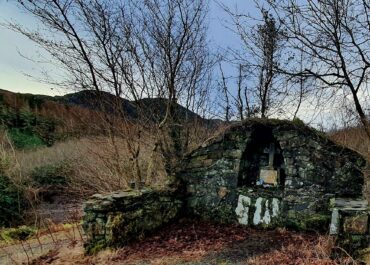Ritual site - holy well, Clonca, Co. Donegal
At Clonca in County Donegal, an early ecclesiastical site reveals centuries of religious continuity through its collection of medieval and post-medieval remains.
Ritual site - holy well, Clonca, Co. Donegal
The focal point is Clonca Old Church, a rectangular gabled structure that stands within a modern graveyard. Whilst the current building dates from after 1622 and served its congregation until 1827, it incorporates fragments from much earlier churches that once occupied this sacred ground. Now protected as National Monument No. 25 under the care of the Office of Public Works, the church continues to yield intriguing artefacts to observant visitors.
Inside the church, tucked into the southwest corner, sits a small portable bullaun stone; a hollowed boulder traditionally used for grinding grain or herbs, though often associated with healing rituals at holy sites. The northeast end of the church displays two ancient grave slabs fixed to the wall, their weathered surfaces bearing witness to generations of commemoration. Beyond the graveyard walls, the site extends into the surrounding landscape, where further treasures await discovery.
In the field west of the graveyard stands an impressive decorated stone cross, carved from a single slab and now restored, though only the stem and part of one arm survive. A holy well, that enduring feature of Irish sacred landscapes, can be found in the northwest corner of the field across the southern road, whilst another field to the west yielded a small cross slab, adding to the rich assemblage of early Christian stonework at this remarkable site. Together, these elements paint a picture of a place that has served as a spiritual centre for the local community for well over a millennium.


